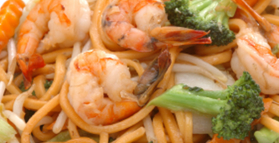 Common food flavouring may trigger weight gain
Common food flavouring may trigger weight gain
Posted on Sat, 8 Aug 09

The popular food flavouring agent monosodium glutamate (MSG) was reported in 1968 to cause a set of symptoms such flushing, tightness of the chest or difficulty in breathing which was labelled as “Chinese restaurant syndrome” due to the popular use of this flavouring in Chinese food. Since this report however, there has been little evidence of such reactions to MSG, even when people who normally report symptoms are given MSG unknowingly [1-2]. Concerns over the safety of MSG have recently been reignited by a study suggesting MSG may be independently linked to weight gain.
From the lab to the kitchen
Animal studies have indicated that MSG can damage areas of the brain that are involved in maintaining healthy metabolism subsequently leading to weight gain and obesity. Few studies though have examined the potential of MSG to cause weight gain in humans. To investigate this possibility the diets of rural Chinese were examined [3]. These people prepared most food at home, were not exposed to processed or fast foods and used MSG similar to salt for flavouring.
MSG use linked to waist line
In those who used MSG the average daily intake was 330 milligrams and remarkably, even after accounting for differences such as physical activity and food intake, MSG intake was positively related to body weight. In fact those who ate food flavoured with MSG were much more likely to be overweight.
Going MSG free
While this study does not prove that MSG causes weight gain, the results are certainly reason for concern. The finding that MSG was linked to weight gain despite similar food intake supports theories that MSG disrupts metabolism and results in a tendency toward weight gain [4].
The use of MSG as a flavouring in foods is increasing and is certainly not limited to Chinese food. MSG is commonly found in foods such as:
-
Fast foods, restaurant meals and takeaway.
-
Pre-prepared stocks and stock cubes, also known as bullion cubes.
-
Condiments such as soy sauce, barbecue sauce and salad dressing.
-
Canned, frozen, or dried prepared food
-
Common snack foods such as flavoured potato and corn chips.
-
Seasoning mixtures.
References
1. Williams AN, Woessner KM. Monosodium glutamate 'allergy': menace or myth? Clin Exp Allergy. 2009 May;39(5):640-6.
2. Geha RS, Beiser A, Ren C et al. Review of alleged reaction to monosodium glutamate and outcome of a multicenter double-blind placebo-controlled study. J Nutr. 2000 Apr;130(4S Suppl):1058S-62S.
3. He K, Zhao L, Daviglus ML, et al. Association of monosodium glutamate intake with overweight in Chinese adults: the INTERMAP Study.Obesity (Silver Spring). 2008 Aug;16(8):1875-80.
4. Hermanussen M, Tresguerres JA. Does the thrifty phenotype result from chronic glutamate intoxication? A hypothesis. J Perinat Med 2003;31:489–495.
Tags: MSG, Food Additives, Overweight, Obesity




